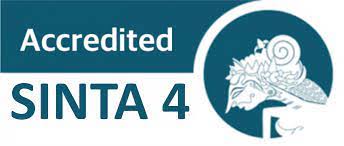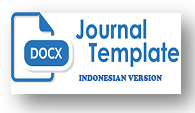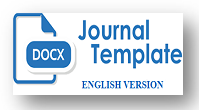Penerapan Data Mining Untuk Memprediksi Daya Serap Lulusan Siswa Menggunakan Algoritma Native Bayes
DOI:
https://doi.org/10.29240/arcitech.v1i1.3294Keywords:
Absorbtion, Graduates, Naive Bayes, Rapidminer, WEKAAbstract
The importance of predicting the absorption of Vocational High School (SMK) graduates in the world of work, especially SMK Negeri 9 Muaro Jambi which is not yet known about the prediction of the world of work that accepts SMK graduates so that the purpose of this study is to analyze the prediction of the accuracy of the absorption of graduates of SMK Negeri 9 Muaro Jambi as material. a reference to see whether the graduates of SMK Negeri 9 Muaro Jambi have achieved the expected goals or not so that this analysis can be used as input for schools to improve the competence of SMK students. This implementation is assisted by using the Rapidminer and WEKA applications with 100 alumni work data input. The attributes used in this analysis process are Department, Waiting Time and Field of Work and Class of Work Field Accuracy. The process in this analysis is carried out with data that has been provided with the Naïve Bayes Classification Method to predict the absorption of graduates. The results of this study the highest accuracy value in the Rapidminer application is at 100% and WEKA is at 100%.
Downloads
References
Alan, Dennis Et Al. 2013. System Analysis And Design With Uml 4th Edition. John Wiley And Sons.
Anhar, 2020, “Ilmu Komputerâ€, Dilihat 18 September 2020, Https://Ilmukomputer.Org/Wp-Content/Uploads/2009/06/Anharku-Flowchart.Pdf
Astuti, Reny., Puspitorini, S., & Akbar, Fajri. 2020. Implementasi Teorema Naïve Bayes Pada Analisa Dan Prediksi Bidang Pekerjaan Alumni Prodi Teknik Informatika Stmik Nurdin Hamzah Jambi. Fortech (Journal Of Information Technology) Vol. 4 No. 1.
Eko Prasetio, 2012. Data Mining Konsep Dan Aplikasi Menggunakan Matlab. Andi, Yogyakarta.
Kusuma, L. 2019. Prediksi Kemampuan Lulusan Smk Untuk Dapat Bersaing Di Dunia Kerja Dengan Menggunakan Naïve Bayes: Studi Kasus Smk Buddhi Tangerang. Algor,1(1) 56-63.
Manalu, E., Sianturi, F. A., & Manalu, M. R. 2017. Penerapan Algoritma Naïve Bayes Untuk Memprediksi Jumlah Produksi Barang Berdasarkan Data Persediaan Dan Jumlah Pemesanan Pada Cv. Papadan Mama Pastries. Jurnal Mantik Penusa, 1(2).
Midiarso, R., & Umilasari, R. 2019. Pemanfaatan Algoritma Naive Bayes Untuk Klasifikasi Status Alumni Smk Bustanul Ulum Al-Ghazali Wuluhan Jember. Undergraduate Thesis. Universitas Muhammadiyah Jember.
Nursubiyantoro, Eko & Puryani, Puryani. 2016. Perancangan Sistem Penelusuran Alumni (Tracer Study) Berbasis Web. Opsi. 9. 85. 10.31315/Opsi.V9i2.2228.
Shiddieq, D., & Fadillah, M. 2020. Penerapan Metode K-Means Untuk Klasifikasi Bidang Pekerjaan Alumni. Jurnal Komputer Bisnis, 12(2), 58-62.
Suliyanto, 2012. “Analisis Statistik Pendekatan Praktis Dengan Microsoft Excelâ€, Andi, Yogyakarta.
Suyanto. 2017. Data Mining Untuk Klasifikasi Dan Klasterisasi Data. Bandung, Informatika.
Tri Vulandari, R., 2017. Data Mining Teori Dan Aplikasi Rapidminer, Penerbit Gava Media, Yogyakarta.
Vijayarani, D., & Dhayanand, M. 2015. Liver Disease Prediction Using Svm And Naïve Bayes Algorithms. India: International Journal Ofscience, Engineering And Technology Research.
Downloads
Published
How to Cite
Issue
Section
Citation Check
License
Authors who publish with Arcitech: Journal of Computer science and Artificial Intelligence agree to the following terms:
- Authors retain copyright and grant the journal right of first publication with the work simultaneously licensed under a Creative Commons Attribution-NonCommercial-ShareAlike 4.0 International License (CC BY-NC-SA 4.0) that allows others to share the work with an acknowledgment of the work's authorship and initial publication in this journal.
- Authors are able to enter into separate, additional contractual arrangements for the non-exclusive distribution of the journal's published version of the work (e.g., post it to an institutional repository or publish it in a book), with an acknowledgment of its initial publication in this journal.
- Authors are permitted and encouraged to post their work online (e.g., in institutional repositories or on their website) prior to and during the submission process, as it can lead to productive exchanges, as well as earlier and greater citation of published work (See The Effect of Open Access).













